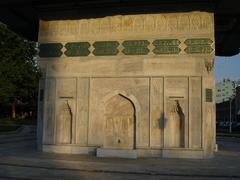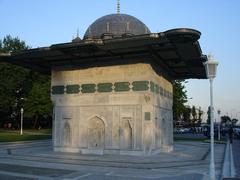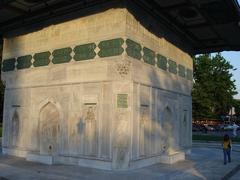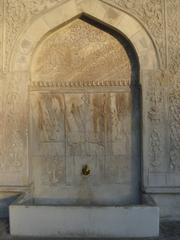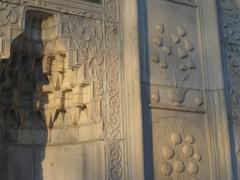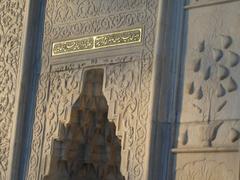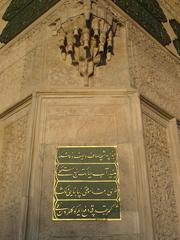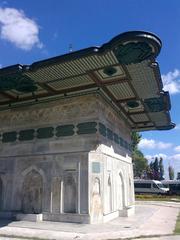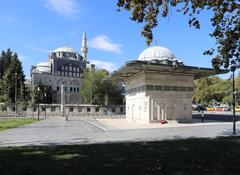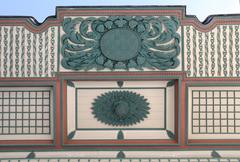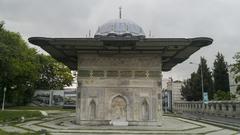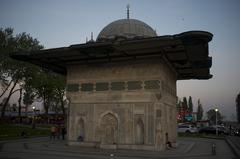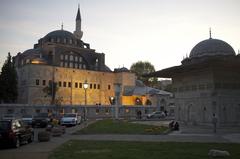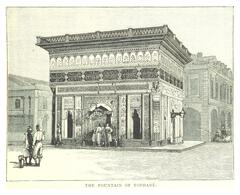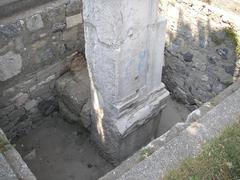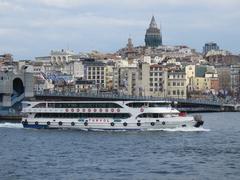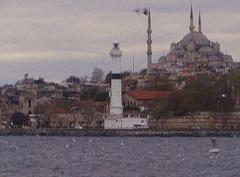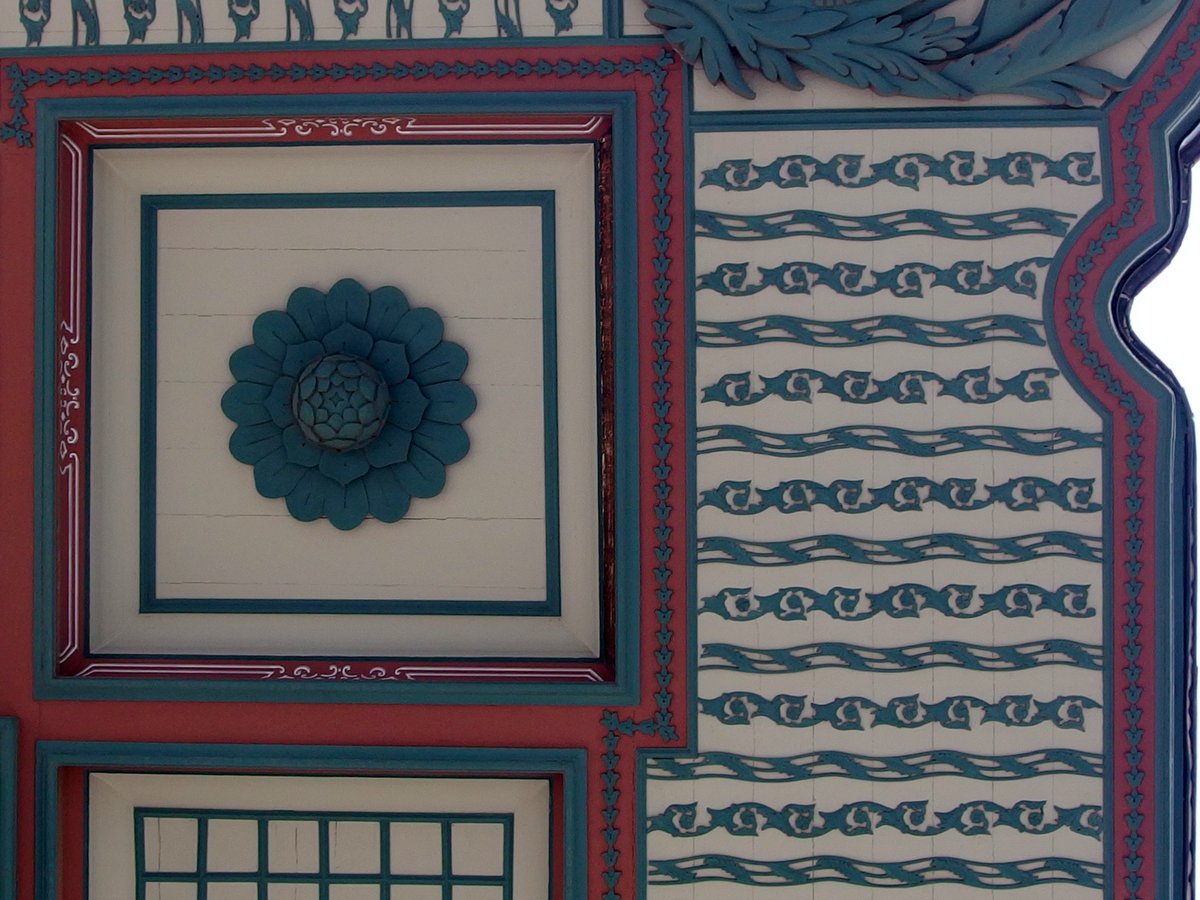
Tophane Çeşmesi Visiting Guide: Tickets, Hours, and History
Date: 25/07/2024
Introduction
The Tophane Fountain, also known as Tophane Çeşmesi, is a significant historical and architectural landmark located in Istanbul, Türkiye. This monument, constructed in the 18th century, stands as a testament to the grandeur of Ottoman rococo architecture and the cultural richness of the Ottoman Empire. Commissioned by Sultan Mahmud I in 1732, the Tophane Fountain was designed to serve both as a public water source and a social hub, reflecting the Ottoman emphasis on public welfare and urban planning. Its intricate carvings, elegant domes, and ornate decorations illustrate the blend of classical Ottoman and European Baroque styles, making it a must-visit site for history enthusiasts and tourists alike (Wikipedia, Sealand Trip).
Table of Contents
- Introduction
- Historical Background
- Visiting Information
- Restoration Efforts
- Cultural and Historical Context
- Role in the Community
- Artistic Elements
- Preservation and Legacy
- Influence on Modern Istanbul
- Nearby Attractions
- FAQ
- Conclusion
Historical Background
Commissioning and Construction
The Tophane Fountain, commissioned by Sultan Mahmud I who reigned from 1730 to 1754, was completed in 1732. This period saw an emphasis on constructing public fountains, known as “sebil,” to provide drinking water for travelers and water for ritual washing needs (Wikipedia).
Architectural Significance
The Tophane Fountain is a prime example of Ottoman rococo architecture, blending classical Ottoman and European Baroque influences. Its design features intricate carvings, elegant domes, and arabesque patterns. The marble facade adorned with exquisite engravings showcases the craftsmanship of the period (Sealand Trip).
Visiting Information
Visiting Hours
The Tophane Fountain is accessible to visitors 24/7, although it is best viewed during daylight hours to appreciate its intricate details.
Tickets
There is no entrance fee to visit the Tophane Fountain, making it a must-see for anyone exploring Istanbul’s historical sites.
How to Get There
Situated in the Tophane neighborhood of the Beyoğlu district in Istanbul, the fountain is located at the intersection of Tophane İskelesi Street and Necatibey Street. It is easily accessible by public transport, including tram and bus services.
Restoration Efforts
In 2006, the Tophane Fountain underwent meticulous restoration led by the Istanbul Metropolitan Municipality and the Sabancı Group. The restoration aimed to preserve the fountain’s original features while reviving its historical splendor, using high-carat gold to enrich its ornaments (Sealand Trip).
Cultural and Historical Context
Built during a transitional period from classical Ottoman to European Baroque styles, the Tophane Fountain reflects the architectural and cultural shifts of the time. It is one of the monumental fountains constructed between 1700 and 1740, notable for its wide eaves and central square location (Istanbul Tourist Information).
Role in the Community
The Tophane Fountain served as a water source and a social hub. Today, the surrounding square is vibrant with shops, a pier, and numerous nargile cafés, contributing to the area’s bustling atmosphere. The fountain and the neighboring Kılıç Ali Paşa Mosque add to the beautiful skyline (Istanbul Tourist Information).
Artistic Elements
Renowned for its artistic elements, the Tophane Fountain features naturalistic motifs and elaborate flower ornaments. These elements blend classical Ottoman and European Baroque styles, with marble walls adorned with arabesques and baroque eaves (Istanbul Tourist Information).
Preservation and Legacy
The 2006 restoration focused on maintaining the fountain’s original features while enhancing its aesthetic appeal. Today, the Tophane Fountain stands as a testament to Istanbul’s rich history and architectural prowess, continuing to inspire awe among visitors and locals (Sealand Trip).
Influence on Modern Istanbul
The Tophane Fountain plays a crucial role in the cultural and social life of modern Istanbul. The surrounding Tophane Square is a cultural hub, offering visitors a chance to explore charming streets, indulge in local cuisine, and immerse themselves in the district’s historic ambiance (Sealand Trip).
Nearby Attractions
Visitors can also explore nearby attractions such as the Kılıç Ali Paşa Mosque and Nusretiye Mosque. These landmarks, along with various dining and entertainment options, make the Tophane region a must-visit destination for tourists (Sealand Trip).
FAQ
What are the visiting hours for the Tophane Fountain? The Tophane Fountain is accessible to visitors 24/7, though it is best viewed during daylight hours.
Is there an entrance fee for the Tophane Fountain? No, there is no entrance fee to visit the Tophane Fountain.
How do I get to the Tophane Fountain? The Tophane Fountain is located at the intersection of Tophane İskelesi Street and Necatibey Street in the Beyoğlu district of Istanbul. It is easily accessible by public transport, including tram and bus services.
Are there guided tours available? Yes, guided tours are available and can provide a deeper insight into the historical and architectural significance of the Tophane Fountain.
Conclusion
The Tophane Fountain is a remarkable example of Ottoman architecture and a symbol of Istanbul’s rich history. Its intricate design, blending classical Ottoman and European Baroque influences, captures the essence of the Ottoman Empire. The restoration efforts ensure that this historic gem continues to inspire awe for generations to come, making it an essential part of any visit to Istanbul. Don’t forget to explore the surrounding attractions and immerse yourself in the vibrant culture of the Tophane district.

